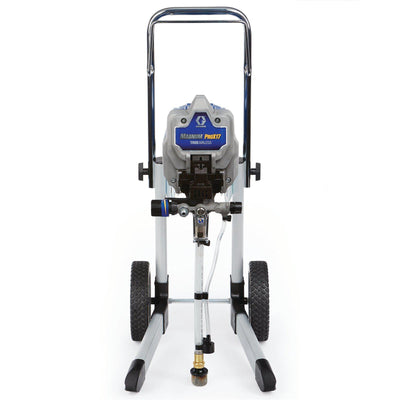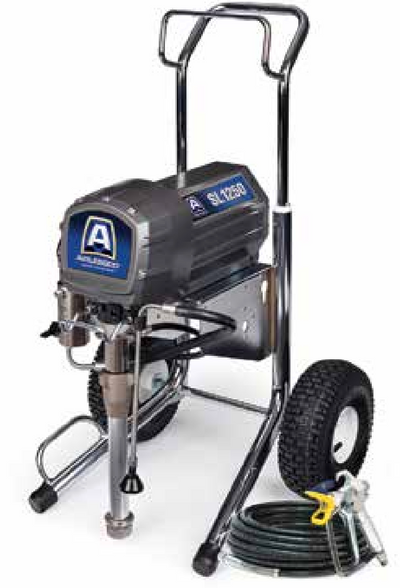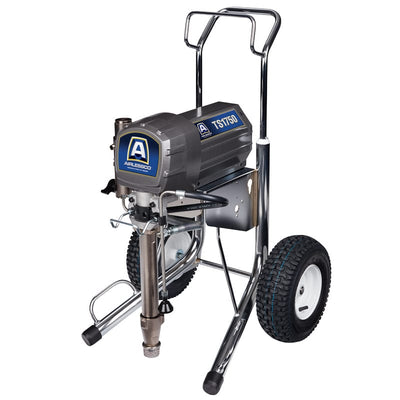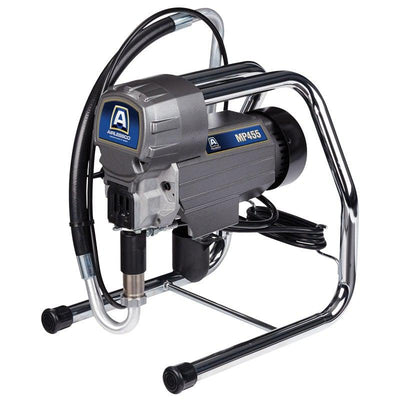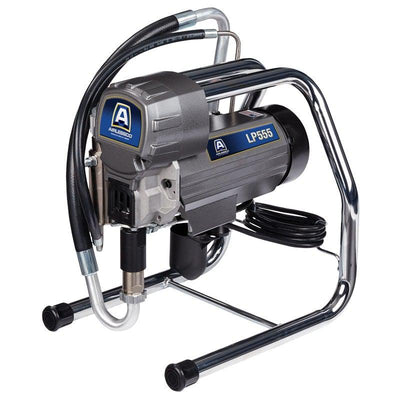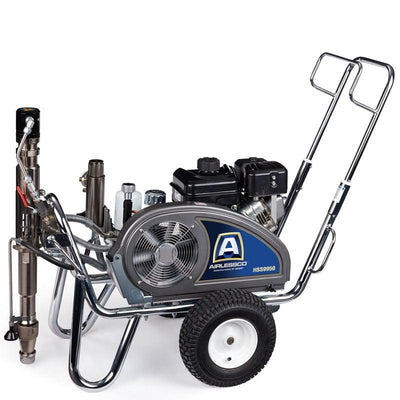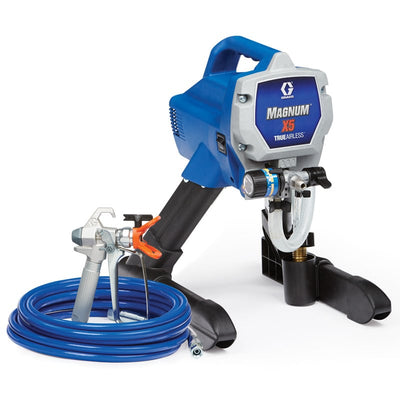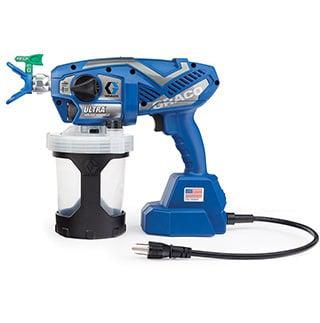How to Use an Airless Sprayer to Paint Cabinets – A Guide
An airless sprayer can be a versatile tool for a variety of painting projects, with the speed which it can spray as well as the fact that it is owned by almost all painters, it can be a great tool. When it comes to painting or spraying cabinets the main challenge with an airless sprayer is that a standard airless doesn’t atomize (break up) paint as fine as other methods of spraying like an HVLP, Conventional, or Air Assist Airless Spray Gun. However, you can still get great results by making a few simple changes to your airless paint sprayer and following a few tips. Will cover those tips and changes so you can achieve great cabinet painting results with your airless paint sprayer.
Why Use an Airless Paint Sprayer for Cabinets
The first question you may have is why to consider an airless sprayer over other options like air assist airless or HVLP. Usually, the best reason to use an airless paint sprayer is a simple fact that you already own one. If you are considering new equipment to start painting cabinets and will be exclusively painting cabinets it can usually make sense to evaluate an air assist airless sprayer or HVLP unit (turbine or air spray gun) as they can offer better atomization which is important when spraying cabinets. However, if you already have an airless sprayer you can make a few slight changes to make it spray cabinets more effectively.
Steps to Make Your Airless Sprayer more effective for Painting Cabinets
Ok so you have decided your airless paint sprayer will be the tool of choice for your cabinet painting project. Here are the key steps you can take to achieve best results when spraying cabinets with an airless sprayer.
- Use a fine finish Airless Spray Gun and Fine Finish Airless Tip- A fine finish airless tip forces material against a restricted opening twice instead of once which is what happens with a standard airless tip. By forcing the material against two tips the material will shear into finer particles which results in greater material break up and as a result a smoother looking finish. Whether its from Titan or Graco both companies offer fine finish airless tips for all of their standard airless spray guns making it easy to enable your airless spray gun to spray a fine finish.
- Consider Converting your Airless Sprayer over to an Air Assist Airless Sprayer – While a fine finish airless tip is a great first step, you can take your spraying to another level by considering using your airless sprayer as an air assist airless sprayer. To convert your airless to an air assist airless sprayer you have to have a source for compressed air, an air hose, and an air assist airless spray gun. If you do not have a compressor and air assist airless spray gun on hand, it is usually more reasonable to just stay with your airless sprayer. However, if you already have a 2 stage compressor around you can upgrade your airless to air assist airless sprayer by buying an air assist airless spray gun and some hose for air. More on converting an airless to an air assist airless sprayer is available here.
Tips on Using your Airless Sprayer for Cabinets
You will want to ensure you select a tip that is not too large as this can create runs when spraying thinner materials. You typically do not want to select too large of a spray pattern either because it can be hard to control your patter and outcome when spraying a smaller object like a cabinet. Common tips that are useful for an airless painting of cabinets are between a 207 and up to a 311 tip depending on the material viscosity you are spraying stains will typically be in the 207 – 307 tip size range while a full bodied enamel may need something larger like a 309 – 311 tip. Ideally, you can have two choices and do a test spray prior to painting your cabinets with your airless sprayer to make sure you will not have problems with runs or overspray.
Once you have a tip size chosen you can follow the tips below when spraying to ensure consistent results.
- Hold the airless spray gun at a consistent distance from the product surface
- Move in a consistent motion do not bend your wrist right to left
- Adjust airless sprayer pressure high enough to see atomization of the material but not excessively high
- Hold the Airless Spray Gun about 8 – 12 inches away from the product surface.
For a further overview of using an airless sprayer you can watch the tutorial below.
Final Thoughts
An airless sprayer is a tool that almost any painter has at their disposal and when matched with a proper tip and used with proper technique can deliver excellent results when painting cabinets. By following these helpful tips you can ensure better results from using your airless sprayer for painting cabinets.

